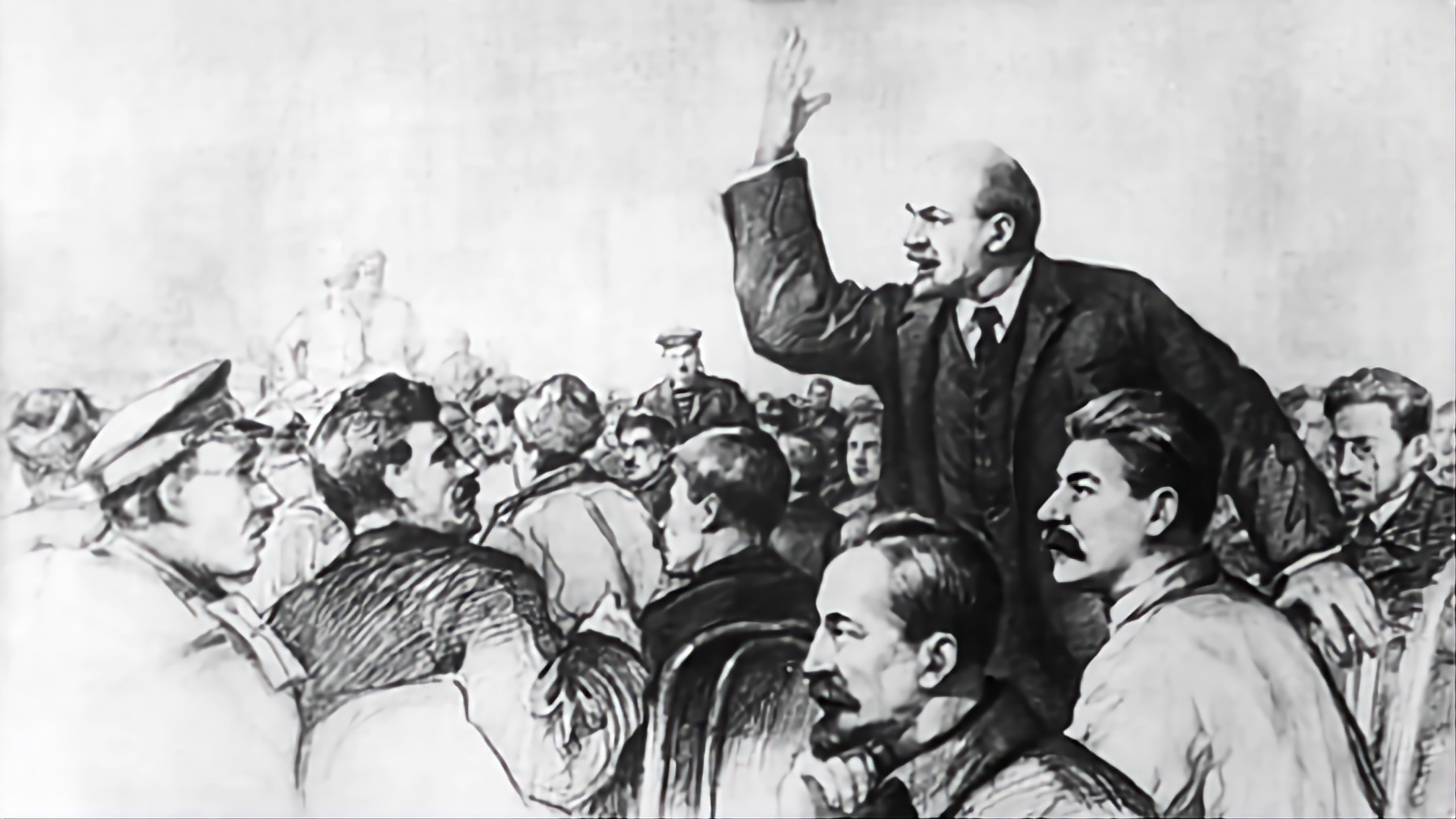KobaCumTribute [she/her]
- 19 Posts
- 258 Comments

 4·2 days ago
4·2 days agoHow does this work? Where am I getting the initial funding? Who am I? Who authorised this? What is this madness?
In the second campaign, the backstory is that you’re basically supposed to be an eastern european country that was colonized by a western power that built some infrastructure to aid in resource extraction, except you revolted against them, gained autonomy, and established a socialist state of sorts, with your objective being to attain autarky and modernize the scattered villages throughout the country.
So there at least, I’d guess the $2,000,000 balance is from seizing the US-backed dictator’s wealth, and the 10,000,000 rubles you start with were either the result of selling captured western equipment to the Soviets or a sort of hands-off foreign aid grant from alternate timeline more-liberal-brained Khrushchev.
Well, the workers aren’t going to go wageless/salariless regardless of whether or not they are working on the project, and I don’t think that there even were contract workers in the USSR.
This made me think of two things, one related to the game and one not. The first is that nothing domestically involves currency that you deal with, all the money is foreign currency used for trade; that means that your internal economy is running purely off some kind of labor voucher system and abstracting away both the wages workers earn and what they spend on goods and services as an overall balanced and isolated system.
The second is that AFAIK starting under Khrushchev (IIRC) there was a tacit acceptance of a so-called “second economy” in the USSR, which involved comparatively small scale private exchange for crops grown in personal plots, craft goods, and contract services like repairwork that existed outside the centrally planned institutions.
Tangentially, that’s making me think about the centralized state-run farm equipment depots in the game, and how one of Khrushchev’s more notably hair-brained and disastrous reforms was privatizing that sort of thing so that farmers had to own and maintain their own tractors, which made maintaining them way more expensive and reduced overall agricultural efficiency since “idk lmao everyone do it for themselves” is much worse than having centralized depots staffed by mechanics whose whole thing is maintaining them and who have all the tools and materials on hand to do so in one place. Also that contemporaneous to that in China, farm machinery was rare and the rural communes weren’t really communes yet, so the farmers who’d managed to get access to tractors and the like quickly turned around and became private contractors who’d go and use the tractors on other farmers’ fields for compensation and within just a couple of years of that being the status quo it was already creating a problematic wealth inequality between farmers in general and the sort of contractor tractor-kulaks that had to be addressed by the state.

 5·2 days ago
5·2 days agoFrom where?
A neighboring country, either Soviet or Western depending on the currency you use for this.
Firstly, why does your state not have construction workers?
Because you don’t have local construction coordinating offices and vehicle depots yet, so you’re relying on outside help.
Secondly, why can’t you requisition the workers from the USSR or another planned economy?
You do, but they want compensation. It’s kind of a gamification of… Actually, you know what? Given the time period it defaults to (starting in 1959), I’m just gonna blame Khrushchev. Maybe it’s an alternate history where he was even more revisionist and did more Gorbachev level dipshittery with trying to liberalize the central planning.
A more realistic answer is that you’re entirely independent and just maintain neutral terms with both the Soviets and the West, so even though you can freely trade with both neither is going to come in and build things for you or make any sort of demands of you. Which is ludicrously unrealistic considering you’re sitting on huge deposits of oil, coal, metals, and uranium, but that’s city builder logic for you.
Why can’t you source it from your own state? Why are your options limited to either producing the resources within the city,
You’re running an independent border republic roughly the size of something like Andorra, maybe a little bigger. Everything outside your borders is foreign, even the Soviets.

 10·2 days ago
10·2 days agoWhen you buy buildings you are buying the resources, having them shipped in, and having foreign contract workers come in with that to actually build it for you using their equipment. It’s just it abstracts this away for the sake of gameplay. It’s like when buildings are purchasing and importing the goods they need, it’s abstracting the actual delivery of them from outside.
It may be a game setting to enable a more complicated build option (so if you’re still in the tutorial campaign this may be disabled, I’m not sure), but if you look down at the right corner where you have “finance with rubles” and “finance with dollars” boxes, there should be a third one to the right of them that uses local resources and labor. That doesn’t cost money (directly, but if you’re filling warehouses of material with the auto-import purchase option that will cost money) but requires construction offices staffed with transport and heavy construction vehicles, as well as busses to take workers to the site, and you need to be sourcing all of those things from somewhere.

 9·2 days ago
9·2 days agoIt’s always neat when a word’s etymology basically boils down to “so yeah it literally meant this other thing which it would intuitively mean, but that’s been wiped out by a flowery idiomatic use of it to mean that same thing only allegorically instead of literally, to the point that no one even thinks about what the underlying literal meaning of it is anymore.”

 2·2 days ago
2·2 days agolike I need the villain speed 4% faster.
That’s just NOED.

 4·2 days ago
4·2 days agoIIRC it established two separate levels of the disease that’s basically the same as the later ghoul/feral ghoul divide in Fallout. So there were vampire zombies that hunted people - including each other - and ones that had managed to stabilize the condition with medical treatment. He hunted them indiscriminately, and it was the latter group that managed to take him out with an organized military strike on his fortified compound.

 3·3 days ago
3·3 days agoI don’t know what the problem I was running into was then.

 4·3 days ago
4·3 days agoI don’t know what the deal is then, because that was the very first thing I tried: setting up a route between bus stops expecting them to work like in Cities: Skylines only to watch as empty busses just circled around between stations and never, or almost never, picked anyone up even when there were people waiting there. It wasn’t until I learned you could target individual buildings as stops that busses started filling up.

 4·3 days ago
4·3 days agoNo, “If a citizen is unable to find a building that they’re looking for in walking range, they will instead walk to a nearby public transport station where they wait to be picked up by a vehicle, and willingly disembark at the first station that has their desired building in range”
I have not been able to get that to work. If the route just goes through stations no one ever boards and it just cycles empty busses indefinitely even with full stations. It’s only when I start pointing the bus at specific buildings that they start filling up and working as expected.

 10·3 days ago
10·3 days agopeople walk only a certain distance of i think 100 meteres
I think this depends on the type of path they have? Like they’ll budget their route to walk for up to X amount of time to reach a location, and the distance is determined by how far they walk in that time? The furthest I’m seeing for “within walking distance” of some buildings is just over 450m with the full 100% walking speed paths along the whole route. Unless this is further modified by a game setting - I went into the campaign (not the tutorial one) with whatever settings it defaults to.
you get a bus depot, buy the busses, and then assign them all routes there.
Right, with the caveat that the routes themselves have to be pointed at buildings to drop people off at, not just other stops. If a bus isn’t going directly to a potential workplace, school, or shop no one will board it and it took me entirely too long to figure that out.
Like bus stops (and I assume passenger rail platforms) aren’t set up to shorten pathfinding to desired locations, they’re a place of last resort that unfulfilled citizens go in the hopes that a bus that can take them to a desired location type shows up at some point.
And to answer my own question: they do seem to just teleport home when they finish a task, they don’t gather to be brought back. That’s another unintuitive thing coming from Cities: Skylines, that traffic isn’t like a back and forth sort of thing for anything but the dedicated vehicles that go through specific routes. Maybe citizens with personal cars are different? Or maybe this a mechanic hidden behind one of the settings, idk.

 5·4 days ago
5·4 days agoThe images say aella on them, so I’m guessing that’s who.

 13·4 days ago
13·4 days agoWhy is it that men who get the tinniest taste of wealth and power open palm slap the “become a pedophile” button?
I think it’s because it’s not distinct from the typical predatory and pathological sexuality that a lot of men are socialized into, and how entrenched the infantilization of women is in misogyny in general. They already see women as lesser beings to be owned and used as they please, and have internalized the idea that wealth entitles them to do this and protects them from consequences, so it’s a simple matter to expand their range of desired victims from adult women to teenage girls.
And that phenomenon is everywhere in American society and has been deeply entrenched for longer than anyone today has been alive. It’s an integral part of American patriarchy and it’s only in the past couple of decades that there’s been any serious - or at least successful - effort to stamp it out.

 38·5 days ago
38·5 days agoAh yes, three “experimental approaches”: a grift, another grift, and the barest minimum dose of states actually maybe doing some fraction of the established and time-tested method of actually addressing the problem.

 9·5 days ago
9·5 days agoI think that got mentioned in the director’s commentary too. I remember The Wire’s director’s commentary track being pretty good as such things go, because it had a lot of stuff like that alongside stories about the actual people some of the characters were based on.

 21·5 days ago
21·5 days agoI remember the director’s commentary on The Wire mentioning that some of the local actors they’d hired got shit in the local scene for things their characters did, so that’s another example of it.

 22·5 days ago
22·5 days agoTake a step back from that understanding and think about why the US chose a close ally like that in the first place, why they keep choosing and uplifting close local allies like that all over the world. This isn’t some little whoopsy “someone didn’t do their research” sort of thing: it’s an active choice on the part of the US to cultivate the most monstrous allies they can find everywhere they can, and to incorporate the violence these allies will eagerly commit on behalf of the machine of imperial hegemony into the capabilities of that machine itself.
Why did the US side with Saudi Arabia? For the same reason that they committed genocide on behalf of Syngman Rhee following his massacre of 300,000 suspected dissidents, for the same reason they hooked up former Nazi intelligence agents with Suharto in Indonesia and provided material support for his campaign of genocide, for the same reason they funded reactionary militants and dictators across the Americas whose crimes are so grotesque I can’t even touch on them without a dozen content warnings.
The US chooses allies like Saudi Arabia and Israel because virulently misogynistic, racist, and elitist factions are the natural allies of America’s own virulently misogynistic, racist, and elitist hegemonic ideology. It is bad for the US to make such allies, but the reason it does so is because it is like them and so they make for an easy and natural extension of its imperial power.

 21·5 days ago
21·5 days agoThe US has killed more innocent civilians just in the Arabian Gulf than Saudi Arabia ever did.
Saudi Arabia was a beneficiary and collaborator in that. They’re a close client state of the US, with a ruling class that’s close with the American ruling class, and whose heretical wahhabist sect is used by US intelligence to create “plausibly deniable” proxy militants across Africa and Asia both to destabilize periphery countries and to engineer pretexts for full invasions by the US when they desire.
The correct response to a dumbass lib who doesn’t understand that Saudi Arabia is a beneficiary and extension of American hegemony is to highlight the closeness of their collaboration and how the US own elitist and arch-patriarchal ideology was eager to ally with and uplift similarly reactionary movements in the periphery, both out of ideological kinship and the cynical pragmatism that militant elitist reactionaries are a violent bulwark against the left and so are perfect local compradors to oversee resource extraction to the benefit of the imperial core. The fact that local compradors of the machine of imperial hegemony are comparatively smaller than the whole of the machine they are a part of does not change the fact that they’re still part of that machine.

 1·6 days ago
1·6 days agoYeah. Then for the ones that don’t, you just use the dragon communion seal to cast stone of gurranq until they die.
Or at least that was the go-to when I played through. I’m going to start a fresh playthrough on the current patch, as soon as I can manage to kill the damn grafted scion in the tutorial again. I did it on what went on to become that arcane whip character back then, so I just need to shake the rust off and get back into the swing of the game now.

 9·6 days ago
9·6 days agoas a strength user seemingly was impossible to do anything without a not strength build.
A strength build in elden ring is kind of hardmode in its own right. You get some really strong options for some bosses, but you’re still generally stuck with slow melee weapons that you basically have to already know a fight very well to use. I went into it the first time with an ultra-greatsword build and did mostly fine up until reaching some of the later bosses, while my second playthrough I went arcane with dual whips and just rolled everything without trouble.
Which makes me wonder if the game was intentionally balanced around players using them for every boss fight.
It definitely feels like it. The game actively pushes it in your face and says “here use this,” they’re a frequent reward for clearing dungeons, and there’s even some quest content that requires you to use them to make things happen. They’re not mandatory, but they seem like the expected choice. Especially since there’s the tradeoff that they make bosses more erratic and rarely do all that much on their own - they’re a force amplifier when used right, but it’s easy for them to make a fight harder and then die without contributing.






Someone showed him an industry ad video for the sort of big sensor array things they install in some border checkpoints and he couldn’t comprehend any of it apart from seeing a big thing moving and hearing someone claim it helps find hidden drug compartments.